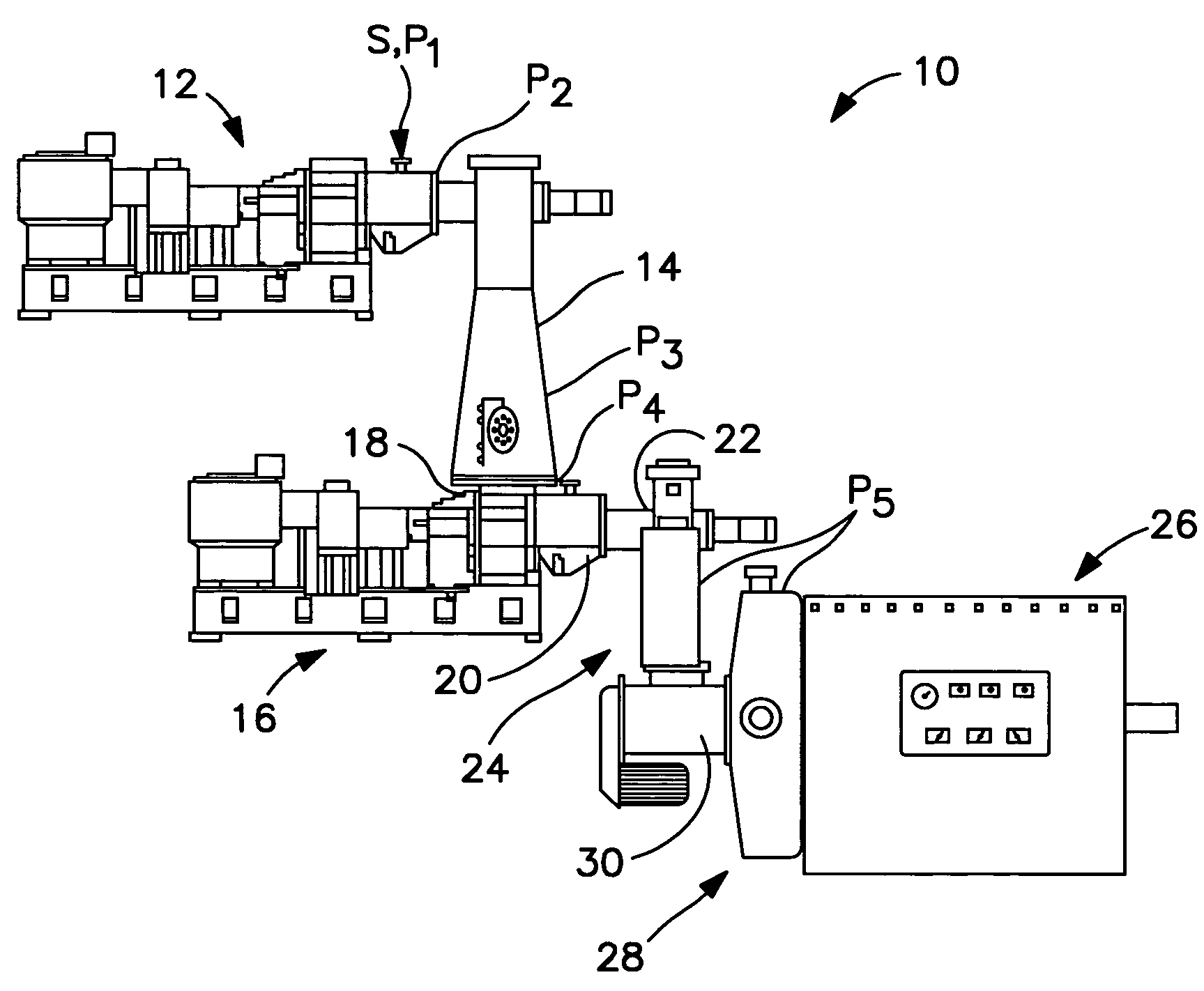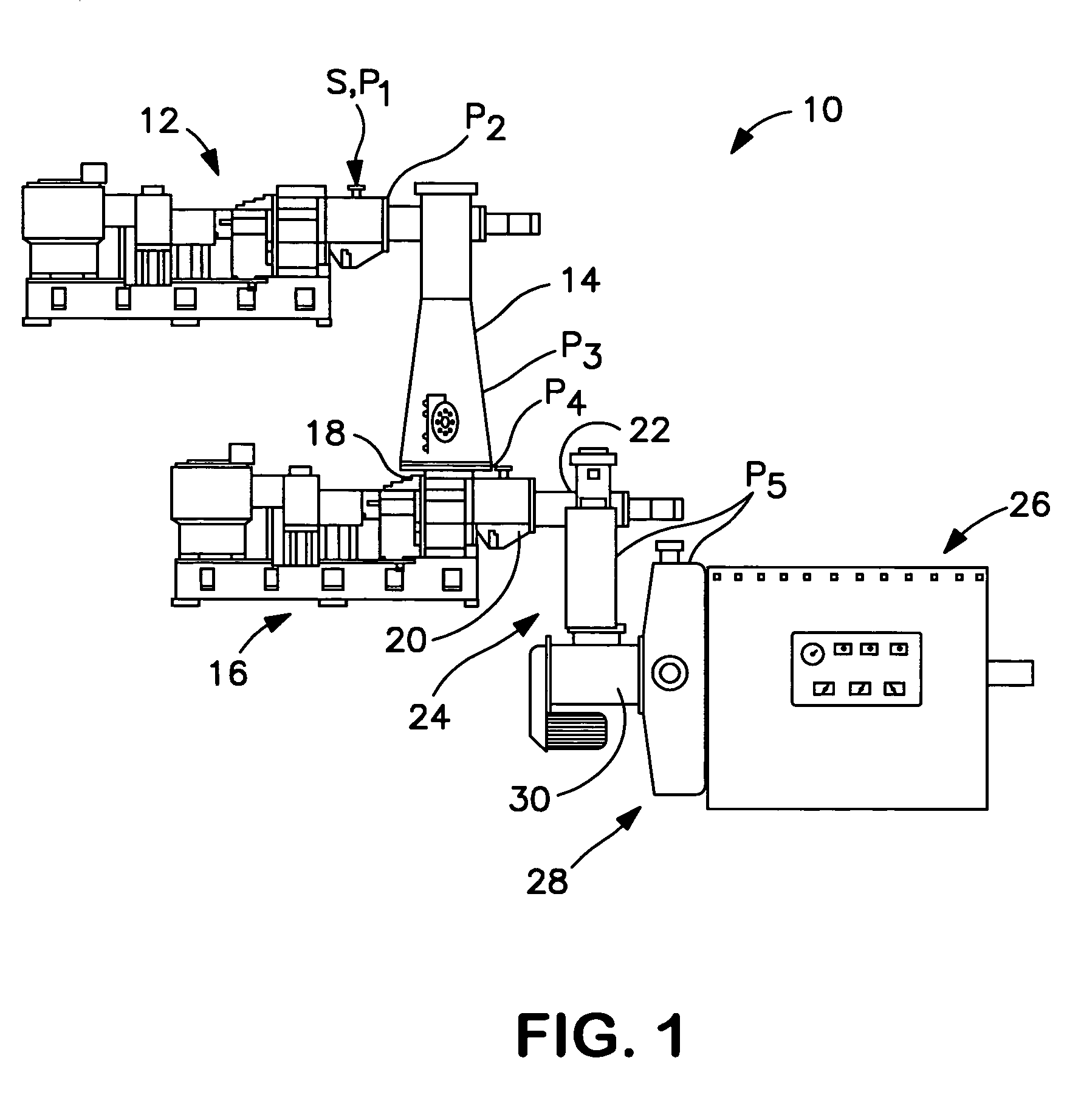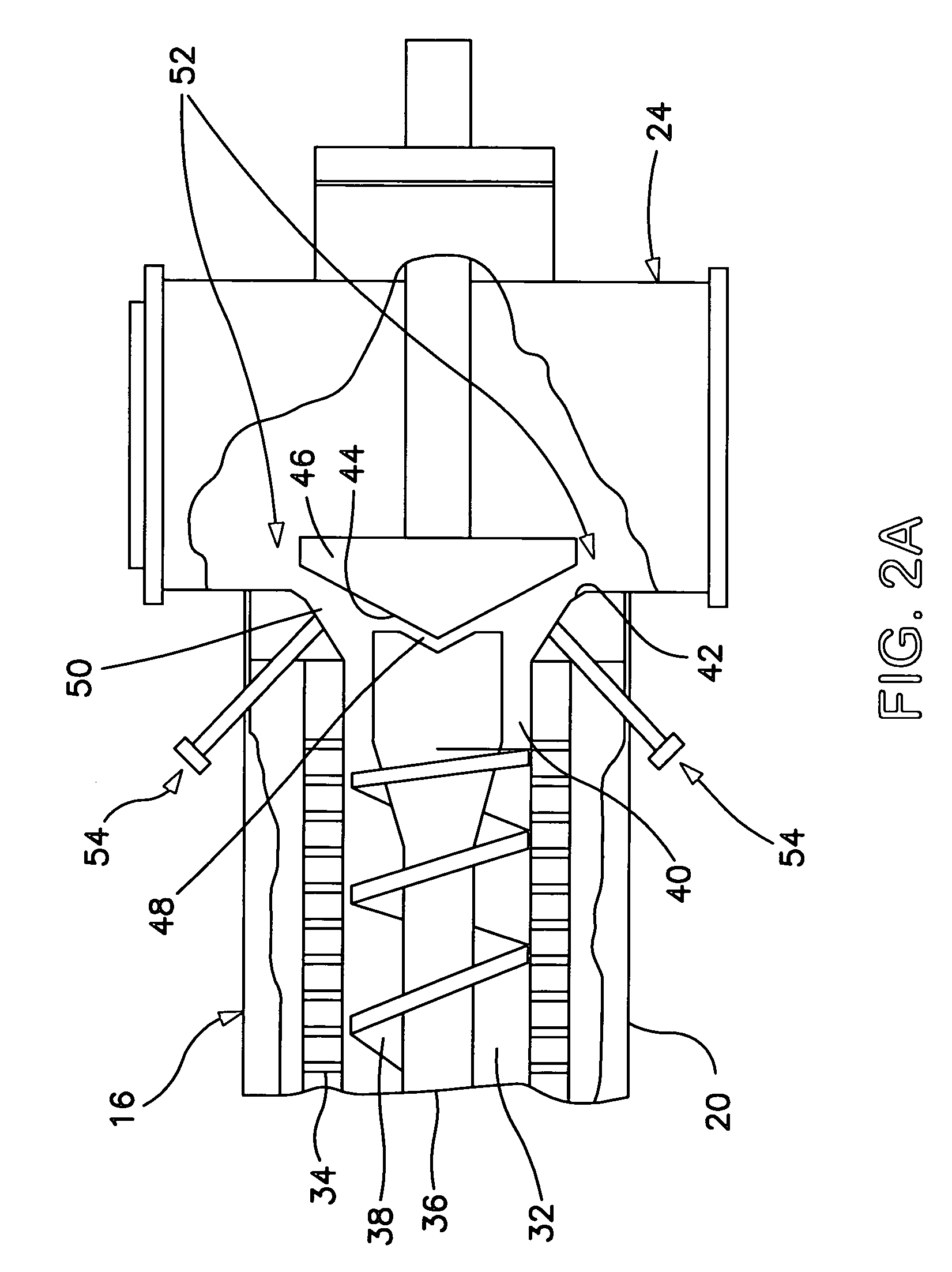Energy efficient TMP refining of destructured chips
a technology of lignocellulosic material and refining chip, which is applied in the direction of pretreatment with water/steam, manufacturing tools, grain treatment, etc., to achieve energy-saving, minimizing equipment components, space and cost requirements, and avoiding increasing the equipment footprint in the mill
- Summary
- Abstract
- Description
- Claims
- Application Information
AI Technical Summary
Benefits of technology
Problems solved by technology
Method used
Image
Examples
Embodiment Construction
1. Overview
[0044]FIG. 1 shows a TMP refiner system 10 according to the preferred embodiment of the invention. A standard atmospheric inlet plug screw feeder 12 receives presteamed (softened) chips from source S at atmospheric pressure P1=0 psig and delivers pre-steamed wood chips at pressure P2=0 psig to a steam tube 14 where the chips are exposed to an environment of saturated steam at a pressure P3. Depending on the system configuration, the pressure P3 can range from atmospheric to about 15 psig or from 15 to up to about 25 psig with holding times in the range of a few seconds to many minutes. The chips are delivered to a macerating pressurized plug screw discharger (MPSD) 16.
[0045]The macerating pressurized plug screw discharger 16 has an inlet end 18 at a pressure P4 in the range of about 5 to 25 psig, for receiving the steamed chips. Preferably, the MPSD has an inlet pressure P4 that is the same as the pressure P3 in the steam tube 14. The MPSD has a working section 20 for sub...
PUM
| Property | Measurement | Unit |
|---|---|---|
| inlet pressure | aaaaa | aaaaa |
| inlet pressure | aaaaa | aaaaa |
| pressure | aaaaa | aaaaa |
Abstract
Description
Claims
Application Information
 Login to View More
Login to View More - R&D
- Intellectual Property
- Life Sciences
- Materials
- Tech Scout
- Unparalleled Data Quality
- Higher Quality Content
- 60% Fewer Hallucinations
Browse by: Latest US Patents, China's latest patents, Technical Efficacy Thesaurus, Application Domain, Technology Topic, Popular Technical Reports.
© 2025 PatSnap. All rights reserved.Legal|Privacy policy|Modern Slavery Act Transparency Statement|Sitemap|About US| Contact US: help@patsnap.com



